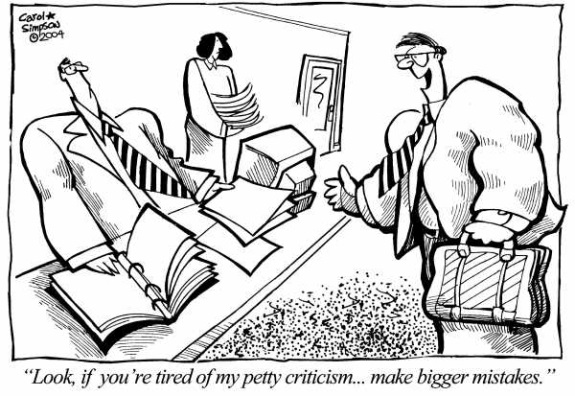As a leader within your organization, one of the things you are tasked with doing is improving the performance of your workers. Constructive criticism is one of the tools for doing this; it is a means for helping your workers understand your expectations so that they can improve the quality of their work. A lot of communication and work can be done though the internet or VoIP providers. However, it is important to always be able to meet with someone in person when giving constructive criticism. Criticism is a touchy subject since if it is not constructive it can backfire, killing morale and diminishing productivity. When providing your employees with criticism, keep the following tips in mind.

Never Criticize Impulsively
Always plan your words and make sure that you are expressing exactly what you mean to say. Things said in the heat of the moment may not come out the way you mean them, with the result being that offense is taken and there is awkwardness and resentment instead of positive change. Carefully choose a moment and ensure that the employee feels free to respond and to converse with you on the matter.
Avoid Losing Sight of the Employee’s Positives
They are within your organization for a reason; do not neglect their positive attributes when delivering criticism. This helps to keep the message from coming across as negative and reassures the recipient of their value within your organization.
Make an Effort to Keep the Conversation Civil and Professional
This may not be easy, especially if you are particularly frustrated with them. Pay attention to how your words sound and always be respectful while remaining honest and forthright. Keep emotions out of it and keep it from becoming personal. Remember, “you should be more courteous to customers” is very different from “you’re a rude person.”
Make it Short
They will likely not retain everything said in a five-minute lecture, so try to get the core of your criticism out in a single sentence. This is not always easy as you may feel compelled to soften the blow, but time is valuable; it is best to get it said quickly and plainly so that they can make the necessary changes.
Provide Solutions
You want to make sure that the employee understands that the point is not to make them feel bad, but to get them to improve. Tie your criticism to the mission of your organization and the person’s role in fulfilling that mission. You want to ensure that the criticism is seen from the right perspective and is helpful.4
Follow Up but Do Not Nag
Check on the employee to make sure that they are acting on the criticism, but do not harp on the issue. Give them the opportunity to change based on what they have learned. If you follow up, then the employee knows that they have the opportunity to redeem themselves.
All employees need criticism at some point. How they respond to it is largely under your control. It is important to understand that the process does not have to be demeaning or rude. Being able to provide constructive, helpful criticism is an important part of the leadership role.




